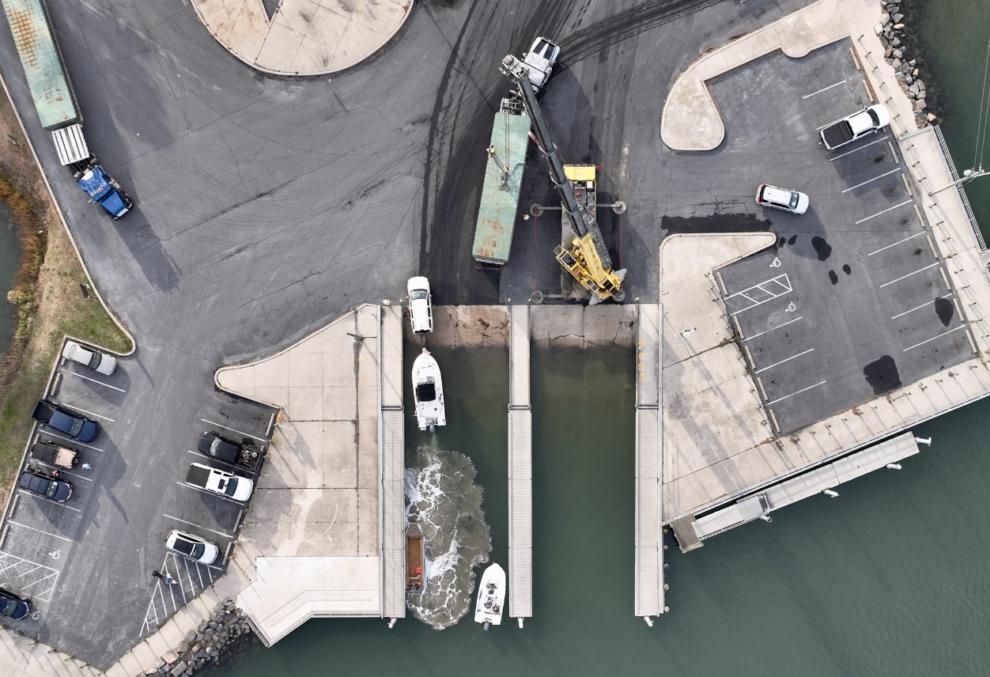Dover, Delaware – The Delaware Department of Natural Resources and Environmental Control (DNREC) announced Monday that two dredging projects in Sussex County are slated to start in the new year. These projects aim to improve navigability on two essential waterways benefiting both boaters and the environment.
DNREC says dredging will start at the southern end of the Assawoman Canal. Once that work is finished, which is anticipated to be in early February 2024, DNREC-contracted dredge crews will transition to White Creek, with an expected completion date by late winter or early spring.
The initial dredging efforts on both White Creek and the Assawoman Canal began in early 2023 but were paused due to environmental restrictions. The dredged sediment from both projects will be repurposed to restore a degraded salt marsh area at Assawoman Wildlife Area.
DNREC’s Shoreline and Waterway Management Section, in partnership with the contractor McLean Contracting Company of Glen Burnie, Md., will remove about 80,000 cubic yards of shoaled sediment from the two waterways. This work will restore White Creek and the Assawoman Canal to previous depths, ensuring safer boating and recreational use.
Funding for this $8.48 million project comes from appropriations to DNREC in the fiscal year 2022 and 2023 Bond Bills and the Waterway Management Fund. Both bills highlighted White Creek and the Assawoman Canal as top-priority dredging projects. Based on surveys and analysis of channel depth, boater safety, and environmental concerns, DNREC identified White Creek and the Assawoman Canal as top priorities for navigation improvements.
For White Creek, the dredging area spans 60 feet wide and 12,400 feet long, from the mouth of the creek at Indian River Bay to the point where the main channel splits into two prongs near Betts Avenue in Ocean View. In 2023, the eastern prong was dredged for 2,650 feet, while the western prong saw 4,100 linear feet of dredging before the project paused.
For the Assawoman Canal, a 35-foot-wide and 2,400-foot-long area was dredged between its confluence with White Creek and the Central Avenue bridge earlier in 2023. The remaining portion of the canal will be dredged with a channel width of 35 feet. The White Creek channel will be restored to a depth of 4 feet below mean lower low water (MLLW), while the northern Assawoman Canal will be restored to a depth of 3 feet below MLLW.
DNREC plans to utilize the dredged material to restore historically degraded wetlands in the Muddy Neck Marsh complex, situated at the south end of the Assawoman Canal. This will be done through the thin layer placement method, minimizing marsh disturbance and promoting natural recolonization of vegetation. Additionally, this approach will enhance marsh resilience in future coastal storms and assist coastal wetlands in adapting to sea level rise and other environmental challenges.
Tree trimming and removal of woody debris along the Assawoman Canal began before dredging commenced. The main channel dredging in the canal will begin in late January, with environmental restrictions requiring completion by the end of February for White Creek and by March 31 for the Assawoman Canal, to minimize impacts on hibernating diamondback terrapins.
The U.S. Coast Guard will issue a Local Notice to Mariners advisory, urging boaters to exercise caution and maintain a safe distance from the dredging activities. Floating and submerged pipelines will be positioned in White Creek and the Assawoman Canal, and dredge and support vessels will be operating in these areas during the project.
The Coast Guard also advises removing commercial fishing nets, crab pots, and other structures from the dredging area to ensure the safety of all waterway users.
Source: WBOC










